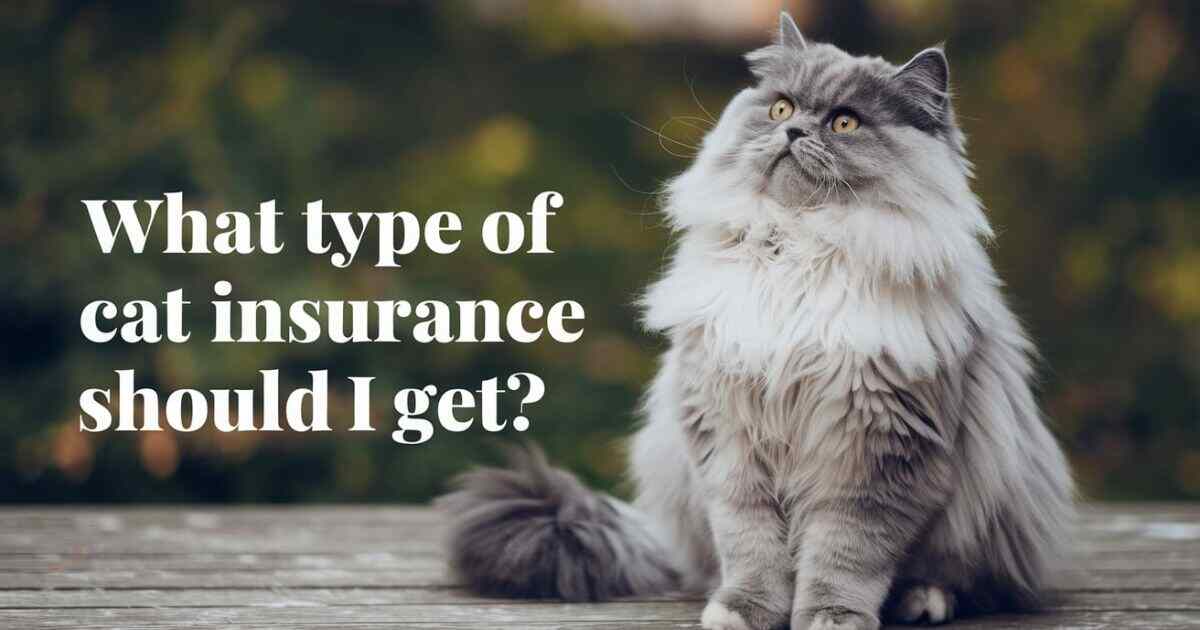What Type of Cat Insurance Should I Get?
Picking the right cat insurance can feel overwhelming because there are so many choices. This guide will explain the different kinds of cat insurance, what to check for in a plan, and answer common questions to help you decide more easily.
Having a cat can bring a lot of happiness and companionship. However, it’s also important to think about the health risks and costs that can come up. Cat insurance can help cover medical expenses in these situations. With so many options, how do you pick the right cat insurance for your furry friend?

Understanding Cat Insurance Basics
Cat insurance is a plan that helps pay for your cat’s veterinary care. It usually covers accidents, illnesses, and preventive care. While the specific benefits can differ based on the insurance company and the plan you choose, most policies cover the following:
- Accidents: Injuries from unexpected events like falls, car accidents, or swallowing harmful objects.
- Illnesses: Health issues that develop over time, such as chronic diseases and viral infections.
- Preventive Care: Regular check-ups, vaccinations, and dental cleanings
Factors to Consider When Choosing Cat Insurance
When picking cat insurance, think about these factors:
Age of Your Cat: Insurance costs may go up as your cat gets older because older cats are more likely to have health issues.
Breed: Some cat breeds are more likely to have certain health problems. If your cat is from a breed with known genetic issues, you might want to choose a comprehensive plan.
Pre-existing Conditions: Most insurance plans do not cover pre-existing conditions. If your cat has any existing health issues, you might need to find a plan that covers those conditions.
Deductible: The deductible is the amount you must pay yourself before the insurance starts covering costs. A higher deductible usually means lower monthly payments.
Annual Limit: The annual limit is the most your insurance will pay in one year. Think about your cat’s breed, age, and overall health when deciding on the right annual limit.
Reimbursement: Some insurance companies let you pay the vet first and then submit a claim to get your money back. Others pay the vet directly.
Waiting Periods: Some plans have waiting periods before they cover certain conditions or treatments. Make sure to check for any waiting periods that may apply.
Why Cat Insurance is Important?
Cats, like other pets, can have health problems from small sicknesses to serious conditions. Vet treatments can be costly, and insurance can help pay for these, making sure your cat gets the best care without causing money worries. Cat insurance can cover accidents, illnesses, surgeries, medicines, and even regular check-ups, depending on the plan.
Types of Cat Insurance
1. Accident-Only Insurance
- What it covers: This insurance pays for injuries caused by accidents, like broken bones, cuts, or swallowing something harmful.
- Who it’s best for Young, healthy cats are less likely to get sick but may have accidents.
- Cost: Usually the cheapest option, costing around $10 to $20 monthly.
Accident and Illness Insurance - What it covers: This plan covers both accidents and illnesses, including long-term conditions, infections, and diseases.
- Who it’s best for: Cats of any age, especially those that might get sick or have a history of health problems.
Comprehensive Insurance
- What it covers: This plan includes coverage for accidents and illnesses, plus preventive care like vaccinations, yearly check-ups, and dental cleanings.
- Who it’s best for: Cat owners who want full coverage for all their cat’s health needs.
- Cost: The most expensive option, costing about $30 to $60 per month.
Lifetime Insurance
What to Look for in a Cat Insurance Policy
When picking cat insurance, think about these things:
Coverage Options
Make sure the policy covers a variety of things like accidents, illnesses, surgeries, and preventive care.
Cost
Compare the monthly payments, deductibles, and how much you get reimbursed. Find a plan that fits your budget without cutting down on coverage.
Exclusions
Check if anything is not covered, like pre-existing conditions, breed-specific issues, or age limits.
Claims Process
A simple and fast claims process can save you trouble. Look for companies with good customer reviews about how they handle claims.
Customer Service
Good customer service is important. Read reviews and ask for suggestions to find companies known for helpful and responsive support.
Top Cat Insurance Providers
Lemonade Pet Insurance
Best Overall
Lemonade offers great coverage at competitive prices. Their plans cover accidents, illnesses, and preventive care. They also have an easy-to-use app for quick claims.
Fetch by The Dodo
Best User-Friendly
Fetch provides wide-ranging coverage and is known for excellent customer service. Their plans cover many conditions, including dental issues and behavior therapies.
Spot Pet Insurance
Best Value
Spot offers flexible plans that let you choose coverage based on your budget. They cover accidents, illnesses, and preventive care, offering great value for money.
MetLife Pet Insurance
Best for Older Cats
MetLife is a good option for older cats, which can be hard to insure. They cover accidents, and illnesses, and offer wellness plans.
Pumpkin Pet Insurance
Best for Kittens
Pumpkin offers full coverage for kittens, including preventive care and vaccinations. Their plans are tailored to meet the specific needs of young cats.
Pets Best Pet Insurance
Best for Pre-Existing Conditions
Pets Best is known for flexible plans and may cover some pre-existing conditions. They offer accident and illness coverage, as well as wellness care.
Embrace Pet Insurance
Best Dental Insurance
Embrace provides strong dental coverage, which many pet insurance plans overlook. Their policies cover dental problems and injuries, along with regular accident and illness coverage.
ASPCA Pet Insurance
Best for Multiple Cats
ASPCA offers discounts for multiple pets, making it a great option for families with more than one cat. Their plans cover accidents, illnesses, and preventive care.
Conclusion
Choosing the right cat insurance means thinking about things like coverage, cost, and customer service. By picking a plan that fits your needs, you can make sure your cat gets the best care without worrying about money. Whether you have a young kitten or an older cat, there’s a policy that can give you peace of mind and keep your pet healthy.
FAQs About Cat Insurance
Q1. What does cat insurance cover?
A: Cat insurance usually covers accidents, illnesses, surgeries, medications, and sometimes preventive care like vaccinations and check-ups. The amount of coverage depends on the plan you choose.
Q2. How much does cat insurance cost?
A: The price of cat insurance depends on factors like your cat’s age, breed, location, and the type of coverage. On average, it costs between $20 to $50 per month.
Q3. Are pre-existing conditions covered?
A: Most cat insurance plans do not cover pre-existing conditions. However, some companies, like Pets Best, may cover certain treatable pre-existing conditions after a waiting period.
Q4. Can I get insurance for an older cat?
A: Yes, some insurers, like MetLife, provide coverage for older cats. Be sure to check age limits and coverage details before buying a plan.
Q5. How do I file a claim?
A: To file a claim, you usually need to send a claim form along with the vet’s bill and medical records. Many insurers allow you to do this online through their websites or apps.
Q6. Is preventive care covered?
A: Some policies cover preventive care like vaccinations and check-ups, but not all. You might need to buy an extra wellness plan for full preventive care coverage.
Q7. What is the waiting period for coverage to start?
A: The waiting period depends on the insurer, but it’s usually a few days to a couple of weeks for accident coverage and longer for illness coverage.
